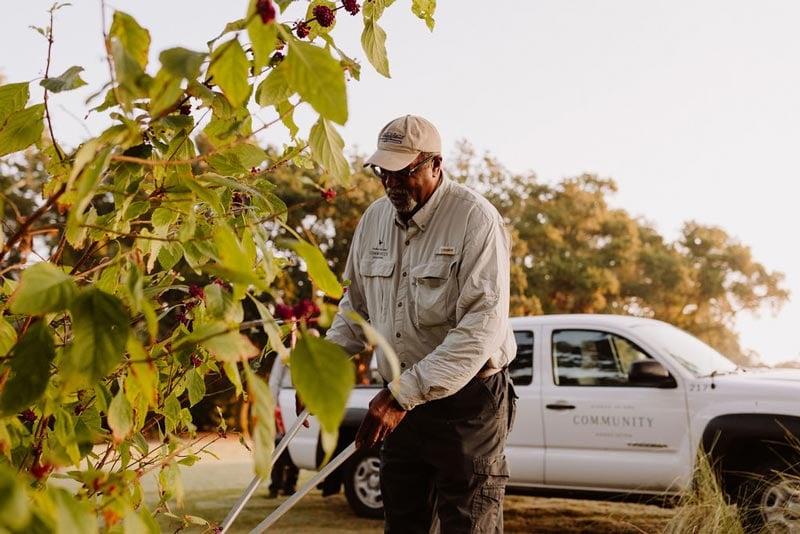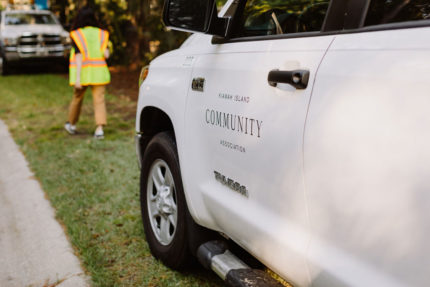Jul
25
2007
From The Blog
Kiawah’s Past: Family Recreation in 1987
In 1987 (the last summer Kiawah was owned by the Kuwaiti’s Kiawah Island Company) the island had very few recreational opportunities to offer families At that time, only a few hundred families lived on the island year-round and Flyway Drive ended before Royal Beach. Ocean Course Drive was a forest, as was the Preserve. Th e Governors and Kiawah Island clubs were not even a concept yet, and the Town of Kiawah Island did not exist. The first million dollar home was several years from construction, and an oceanfront lot on Surfsong could be purchased for less than a half-million dollars. Jeep tours were popular and canoe tours appealed to some members.
In the ensuing 20 years, Kiawah leapt to the forefront of international resorts. Many people and many factors have keyed that growth, with much of Kiawah’s international renown fueled by golf. Jeep tours to explore Kiawah’s fauna, flora and history that once passed through thick oak and pine forest to the vast unspoiled beach, have given way to multi-million-dollar oceanfront properties, the Ocean Course and the Beach Club. But through all of these changes, the underlying theme has always been a focus on family.
Just over 30 years ago, the beach was the magnet that drew development to Kiawah Island. Ten years later, Kiawah had become an elite resort with hundreds of private residences of varied types, three golf courses, two tennis facilities and multiple swimming pools. Th e Kiawah of 1987 also offered a conference center, an inn, a shopping center, several restaurants, the multi-use Night Heron Park, miles of bike trails, and a smattering of organized community, family and recreational programs.
Picture Summer, 1987
In late June, a family arrives at their Kiawah house or villa on Sunday afternoon for two weeks of vacation. Th e children hop on their rental bikes, which have been delivered by the Bike Shop, run by the recreation staff . They make a quick trip to the inn to pick up a one-page, photocopied sheet listing the week’s social and recreational activities, open to visitors and members alike. Th at evening, they head to the East Beach Conference Center to meet the recreation staff and other vacationers at the Sunday night ice cream social. For one dollar, they enjoy their choice of two kinds of ice cream and three or four toppings. In a year, staff will add a Sunday night family movie to follow the ice cream social, but in 1987, this family lingers for a half-hour and then returns home.
During the week, the family members play a little golf and spend much of their time at the beach, a short walk or bike ride from their home. They drag their own chairs and don’t worry about using an umbrella; no rentals are available as of yet. On a couple of mornings, and particularly in bad weather, the children decide to join perhaps 50 other children at Kamp Kiawah at Night Heron Park. Th e cost: $5.00 for a half-day; they are not interested in the $10.00 full day option (requiring a bag lunch). They select the activities they like best and choose to attend on the day with the visit to the fi re station and on the t-shirt tie-dye day. After a short round of golf or a game of tennis, their parents meet them with a picnic lunch and they stay at Night Heron for a swim. Th e cost for this swim is a mere $3.00 for members, though the pool staff sometimes lets them in at no charge once they get to know the children.
On a couple of mornings, they skip the beach and bike to the association members’ pool (then known as the property owners pool) – the Sandcastle would not be built for almost another decade. They buy lunch at the small, screened-in snack bar, choosing among the three or four sandwiches available. Some afternoons, after spending most of the day at the beach, they go for a late afternoon swim at the members’ pool or to Night Heron for youth pool games. On other afternoons, the Straw Market attracts them, where they browse the shops and end with an ice cream cone. One night they have dinner at the Night Heron Park Restaurant, a small restaurant at the Straw Market. Th e only other dining-out options are the Inn and the Privateer at Bohicket Marina.
On several evenings, the family enjoys island activities. Their favorite is Bingo Night. They sit on folding chairs set up at the Night Heron pavilion and the older children play two or three cards at once. In a few years, bingo will move to the East Beach Conference Center and be followed by a family movie. Program and Events Manager Paul Molinaro will introduce Family Trivia, three trivia questions after each of five rounds of bingo, which the family answers together in the hopes of winning a prize.
They also enjoy the Tuesday night cookout in the park. They buy a picnic dinner of barbequed chicken, hot dogs, hamburgers and salads while the children roam around the park, perhaps playing pickup football or soccer with the recreation staff . They gather at the edge of the lagoon to watch the alligators swim, the latter attracted by the smell of the chicken, which they are unfortunately often fed. This is a social evening for vacationing families to mingle, attended by both members and visitors.
On another evening, they might attend a movie night, sitting on folding chairs set up in a room at East Beach. The movie is free and they buy popcorn for one dollar. Eventually, a large outdoor screen will be constructed and movies will move outside, to the park.
The highlight of their vacation is the Fourth of July, when several activities are offered. In the morning they head to Night Heron for a tradition that has survived intact for 20 years: decorating their bikes with red, white and blue streamers and following a fi re truck in a slow, enthusiastic bike parade. In the afternoon they can be found on the beach participating in the sand sculpture contest. Night finds them toting blankets and chairs down the beach toward the members’ pool to enjoy the island fireworks display with practically every other family on the island.

